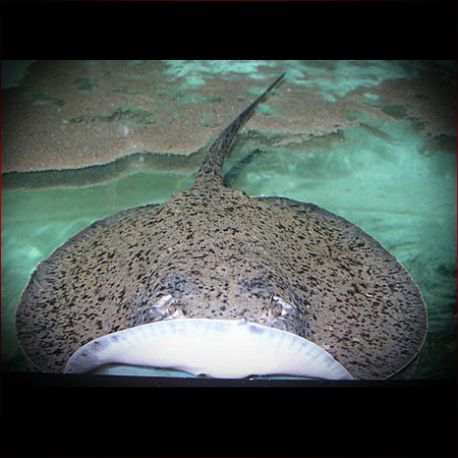More info
Datasheet
| Minimum Tank Size | 1100 litres / 290.59 US gallons |
| Maximum Size | 40.0cm / 15.75inches |
| Temperature | 23°C / 73.40°F - 29°C / 84.20°F |
| Hardness | 2-12ºdH |
| pH | 6.0-7.0 |
Behaviour:
Rays are among the top predators in the ecosystems they populate in nature and are unsafe to keep with most other species. Conversely, they also seem to prefer a quiet life and will often fail to thrive when kept alongside very aggressive or territorial companions. The best tankmates are large enough not to be eaten, peaceful, and ideally occupy the upper parts of the tank. Some suitable tankmates include cichlids such as Heros or Geophagus species, larger characins, cyprinids, Asian or South American arowana, Cichla or Datnioides spp., bichirs, loaches, and Pimelodid catfish. However, caution is advised when selecting tank companions as some species may not be compatible due to aggression or predatory behavior.
Feeding and Diet:
In the wild, rays primarily feed on other fish and aquatic invertebrates such as worms and crustaceans. They have high metabolic rates and require feeding at least twice a day. A diet consisting mainly of meat is preferred, with options like live or frozen bloodworm, Tubifex, Artemia, krill, mussels, cockles, prawns, squid, whitebait, and earthworms. It's crucial to ensure they feed well after importation, often starting with live foods before transitioning to dead alternatives. Rays should not be fed mammal meat or feeder fish as these can be harmful to their health.
Reproduction & Dimorphism:
Potamotrygon species exhibit matrotrophic viviparity, with young developing inside the mother and being born live and fully-formed. Breeding in captivity is successful, with gestation lasting between months and litters typically ranging from 1-8 pups. Sexing rays is straightforward, with males possessing claspers on each pelvic fin for insemination. During breeding, size compatibility between mates is crucial, as courtship can be aggressive, requiring a larger female to defend herself adequately.
Habitat and Distribution:
The Maracaibo River Stingray is found in the waters surrounding and feeding Lake Maracaibo in Venezuela. Lake Maracaibo is the largest lake in South America with brackish water, connected directly to the Gulf of Venezuela. The species prefers softer mud or sand substrates in surrounding freshwater habitats. Tank setups for these rays should include decor like bogwood, branches, or rocks, and a spacious environment with dim lighting. Filtration is crucial due to their predatory nature, with weekly water changes recommended to maintain water quality. A tightly-fitting cover is necessary as rays may breach the water surface.
Aquarium Setup:
The aquarium setup for Maracaibo River Stingrays should include a large tank with a minimum of 1100 litres capacity, ensuring ample space for the fish to thrive. Strictly speaking, decor isn't necessary; however, adding bogwood, branches, or rocks can be beneficial. Choice of substrate varies between river sand, aquarium gravel, or no substrate, with filtration being a critical aspect. A sump-type arrangement or high-quality external canister filters are recommended with a turnover rate of four times per hour. Water conditions should have a pH range of 6.0-7.0, hardness of 2-12 dH, and a temperature range of 23-29°C.

